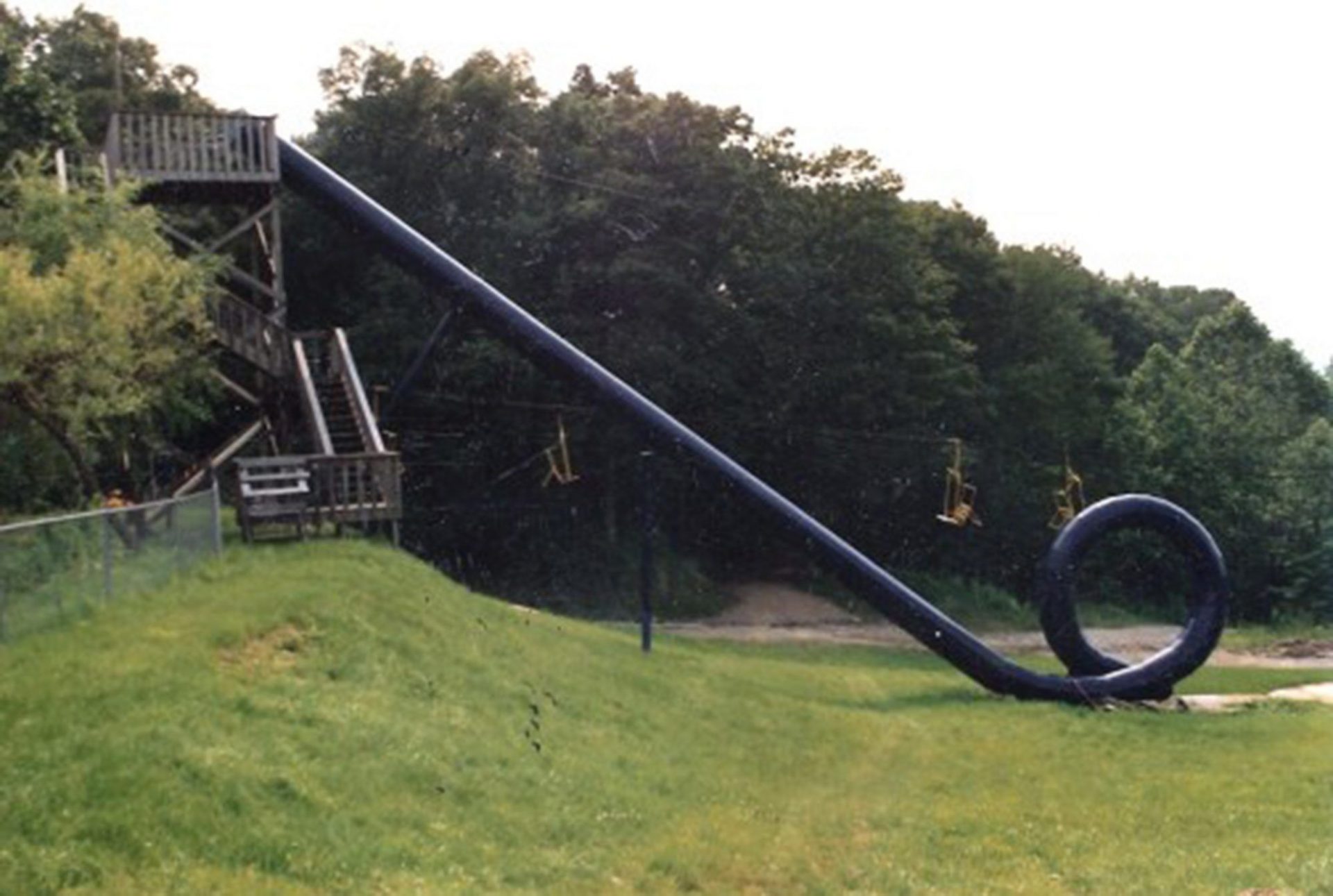Nostalgia for the 1980s has been at a high for several years now. For many, this nostalgia stems from a desire for a simpler time, when children could enjoy a level of freedom that would be unthinkable now. For a large number of Americans who grew up during this period, especially in the New Jersey area, this feeling was best embodied by Action Park.
Anyone who saw Johnny Knoxville’s 2018 ‘comedy’ Action Point, or has simply seen one of the several episodes of Defunctland on the topic, will be familiar with the park’s legacy. Known to some as ‘Class Action Park’, and described by others as ‘the most dangerous water park of all time’, it has become the stuff of legend from the sheer number of injuries and horrendous deaths that occurred there.
Until recently, sealed court documents meant the true history has never been fully brought to light, but Seth Porges and Chris Charles Scott III dive in headfirst with archive footage from the park, interviews with former employees, and charming animation. From owner Gene Mulvihill’s early days as a penny-stock broker (a la The Wolf of Wall Street) to the inception of the park and its shocking disregard for safety; to Mulvihill’s creation of a fake insurance company in the Caymans to avoid paying liability insurance, and to its eventual closure. It all sounds ridiculous on paper, but the audience will become firm believers once they hear the testimonies from the former employees and attendees.
It is hard not to be enraptured from the tales with which the viewers are regaled. There is a mesmerising oral quality from the proceedings that captures a strange youthful feeling in the audience, similar to that of a tall tale passed down from older siblings to their youthful successors. They are both astonishing and horrifying in hindsight – like the use of park employees to test the infamous cannonball loop that resulted in missing teeth and broken bones. There is also a great deal of dark humour to the affair, greatly aided by the simple yet effective animations that feel like a child’s drawing.
This also plays into a strange dichotomy that pervades throughout the film. Despite the horrific nature of what happened there, the interviewees mainly look back on the park with fondness. It stands as a lasting legacy to their childhood and a sense of rebellious freedom that could never be captured again. As one interviewee reflects, the memories are the kind you laugh about over a beer, but eventually, retell to your therapist.
Although certainly mesmerising, this structure initially also seems shallow. However, there is a surprising level of emotional weight to Class Action Park as well. This is especially so come the third act when the film pivots to focus on the tragic deaths that occurred at the park. The grief felt by the family of George Larsson, the first of five visitors that were killed at the park, is palpable. Even 40 years after his death due to faulty equipment on the Alpine Slide ride, the sheer negligence and lack of justice that they received will likely infuriate viewers.
Awkwardly though, despite the added emotional weight that this brings to the film, the rather quick return to focus on those who praise Mulvihill and the park for its ambition feels somewhat jarring and insensitive. Indeed, it seems as though Porges and Scott have become swept up in their own nostalgia for Action Park that they, in turn, become apologists for it, losing some of the impact they had built up in the process.
Despite this, however, Class Action Park is still a gripping documentary and rallying cry for a youth spent recklessly. Offering new insight into the infamous park and exploring its legacy more deeply than ever before. For those fans of theme parks and their histories, this film is well worth the price of admission.
Screened as part of Fantasia Festival
